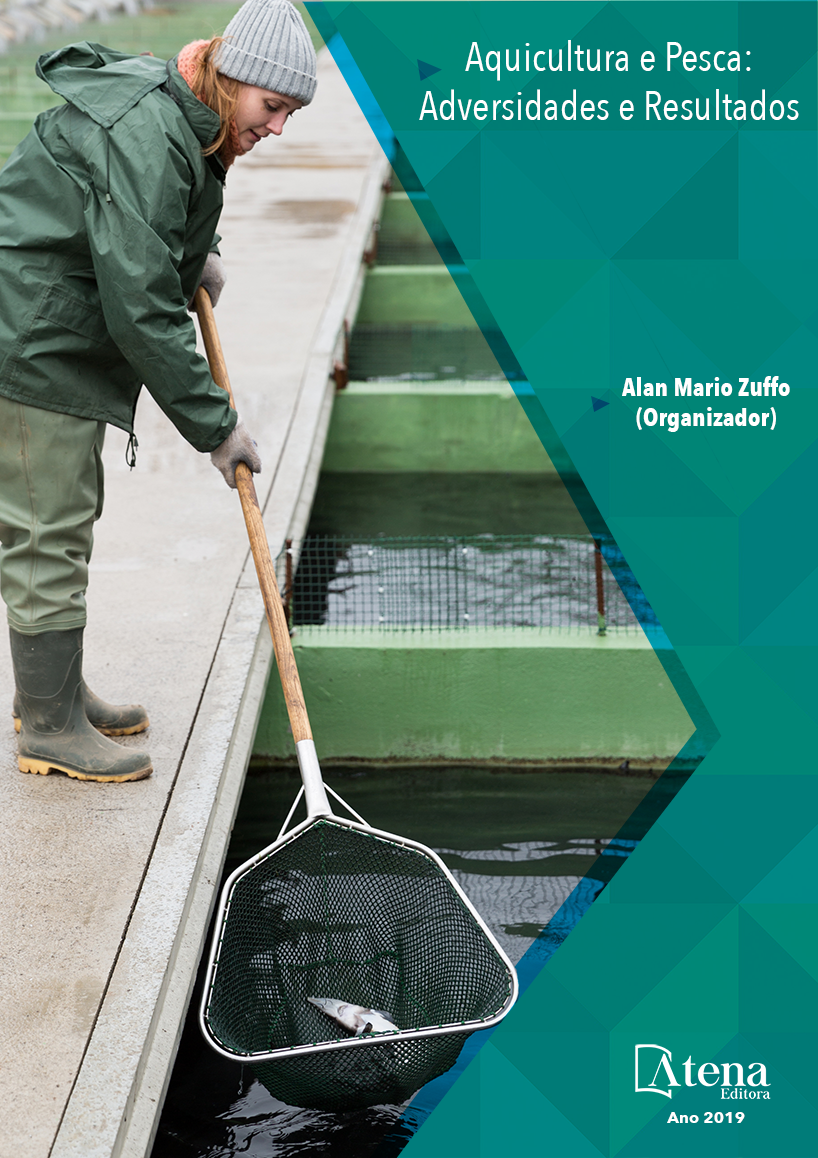
AVALIAÇÃO DO POTENCIAL DE CRESCIMENTO EM CULTIVO DA MACROALGA Gracilaria domingensis (GRACILARIACEAE, RHODOPHYTA) EM DISTINTAS METODOLOGIAS NO PARQUE AQUÍCOLA DA ENSEADA DA ARMAÇÃO DO ITAPOCOROY (PENHA, SANTA CATARINA)
As macroalgas estão entre os
recursos marinhos com potencial para
exploração econômica. No litoral de Santa
Catarina, destaca-se a macroalga Gracilaria
domingensis. Com a finalidade de comprovar
esse potencial foi avaliado incremento
em biomassa da macroalga cultivada em
distintas metodologias de cultivo, linha e rede,
durante o inverno e primavera, em 2 áreas
aquícolas, armação e paciência, na enseada
da Armação do Itapocoroy, Penha/SC, bem
como o rendimento do teor de ágar das algas
cultivadas. Para isto foram selecionadas, 1000
gramas de macroalgas, que foram distribuídas
entre 36 unidades experimentais, cordas
de cultivo, em duas áreas, nas diferentes
metodologias. Sendo assim, cada área de
cultivo, armação e paciência, possuía 18
unidades experimentais, 9 na metodologia
linha e 9 na metodologia rede. Todas as
unidades eram fixadas horizontalmente a uma
profundidade média de 1,2m. Semanalmente,
as cordas de cultivo eram limpas e cada 14 dias
sua biomassa avaliada. No final da estação
de cultivo a biomassa das macroalgas foi
utilizada para avaliar o rendimento em ágar.
Os parâmetros ambientais de temperatura
e salinidade foram monitorados ao longo do
período. Os resultados demonstraram que o
incremento em biomassa de G. domingensis
não apresenta diferenças estatísticas, quando
considerado as estações do ano e as áreas
de cultivo. Entretanto se for considerando o
fator metodologia, as macroalgas cultivadas
no sistema rede apresentaram incremento
superior a metodologia linha. Os parâmetros
ambientais monitorados não apresentaram
diferença significativa entre os pontos de coleta
ao longo do período de estudo. O rendimento
de ágar, ficou entre 30 a 35% e não apresentou
diferença significativa entre as estações do ano.
AVALIAÇÃO DO POTENCIAL DE CRESCIMENTO EM CULTIVO DA MACROALGA Gracilaria domingensis (GRACILARIACEAE, RHODOPHYTA) EM DISTINTAS METODOLOGIAS NO PARQUE AQUÍCOLA DA ENSEADA DA ARMAÇÃO DO ITAPOCOROY (PENHA, SANTA CATARINA)
-
DOI: 10.22533/at.ed.2721929032
-
Palavras-chave: Alga marinha. Ágar. Metodologias de cultivo. Áreas aquícolas. Maricultura.
-
Keywords: Seaweed. Agar-agar. Cultivation methodologies. Areas of cultivaton. Mariculture.
-
Abstract:
The macroalgae are among the
marine resources with potential for economic
exploitation. In the littoral of Santa Catarina, the
macroalgae Gracilaria domingensis stands out.
In order to prove this potential, it was evaluated
an increment in biomass of the macroalgae
cultivated in different cultivation, line and net
methodologies, during winter and spring, in two areas of cultivation, in the Armação
do Itapocoroy, Penha/SC , as well as the yield of the agar content of cultured algae.
For this have been selected 1000 grams of macroalgae which were distributed among
36 experimental units, in two areas, in the different methodologies. Thus, each area
of cultivation had 18 experimental units, 9 in the line methodology and 9 in the net
methodology. All units were fixed horizontally at an average depth of 1.2m. Weekly,
the growing ropes were clean and every 14 days their biomass was evaluated. At the
end of the cultivation season, the biomass of the algae was used to evaluate the yield
in agar. Environmental parameters of temperature and salinity have been monitored
throughout the period. The results showed that the increment in biomass of G.
domingensis does not show statistical differences, when considered the seasons and
the areas of cultivation. However, if considering the methodology factor, the macroalgae
cultivated in the net methodology showed higher increments of the line methodology.
The monitored environmental parameters did not have a significant difference between
the collection points throughout the study period. The yield of agar was between 30 to
35% and did not have a significant difference between the seasons of the year.
-
Número de páginas: 15
- Gilberto C. Manzoni
- Jaísa Vedana


